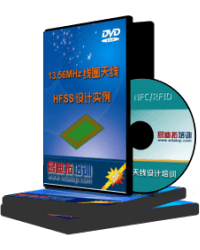- 易迪拓培训,专注于微波、射频、天线设计工程师的培养
Dielectric Constant of FR4 at 13.56 mhz
What value for the dielectric constant am I looking for in the substrate at this frequency and why?
how can I determine the dielectric constant at a 13.56 mhz given the dielectric constant at 1 mhz?
Hello,
The exact value depends on the formulation of the resin. At increasing frequency (from 1 to 13.56 MHz), relative dielectric constant drops a bit, just a guess, think of about 5%. If the dielectric constant is really thatimportant for you, you need to consult your supplier and make sure you get same material every time.
The drop-off rate changes for various materials, but you can sometimes find charts with that information.
Take a look at the chart on page 3:
www.speedingedge.com/PDF-Files/tutorial.pdf
Most of the FR-4 you get at PCB houses is around 4.2-4.9, due to variations in FR-4 and resin percentage and composition.Start with 4.7 and make your design from there.If this is just a class project, don't get too wound up about Er accuracy... you're probably not going to spend days and days running 3D EM analysis to perfect your design for a mass-market environment.Pick a reasonable value and run with it.
These 13MHz "antennas" on PCB are more or less inductors, with inductive near field coupling. They are designed/calculated like other printed regular inductors, and the dielectric constant of the PCB has little effect. If you don't trust this statement, you can verify this by full EM simulation.
dielectric constant of the PCB has little effect Yes. At best, it plays a minor role when tuning the resonant circuit. Capacitor tolerance contribution will be most likely higher. 13.56 MHz Er is effectively equal to 1 MHz value. As said generic FR-4 specifications are rather loose. Critical RF applications (at higher frequencies than 13.56 MHz) are prescribing a more tightly specified substrate or adjusting the design for empirical determined substrate parameters.
Most 13.56 MHz RFID antenna designs have the E-field between the turns mostly in air. In that case influence of dielectric is less then capacitor tolerance, so I agree with FVM.
I saw some designs where both upper and bottom layer have turns facing each other. In that case change in dielectric constant may detune narrow band antennas (low data rate) too much. So best is to post your proposed geometry, or do some simulation and play with er to find the effect on center frequency.
申明:网友回复良莠不齐,仅供参考。如需专业学习,请查看13.56MHz NFC/RFID天线设计培训课程。
上一篇:UHF RFID 天线工作距离测试问题
下一篇:RFID天线仿真结果分析



